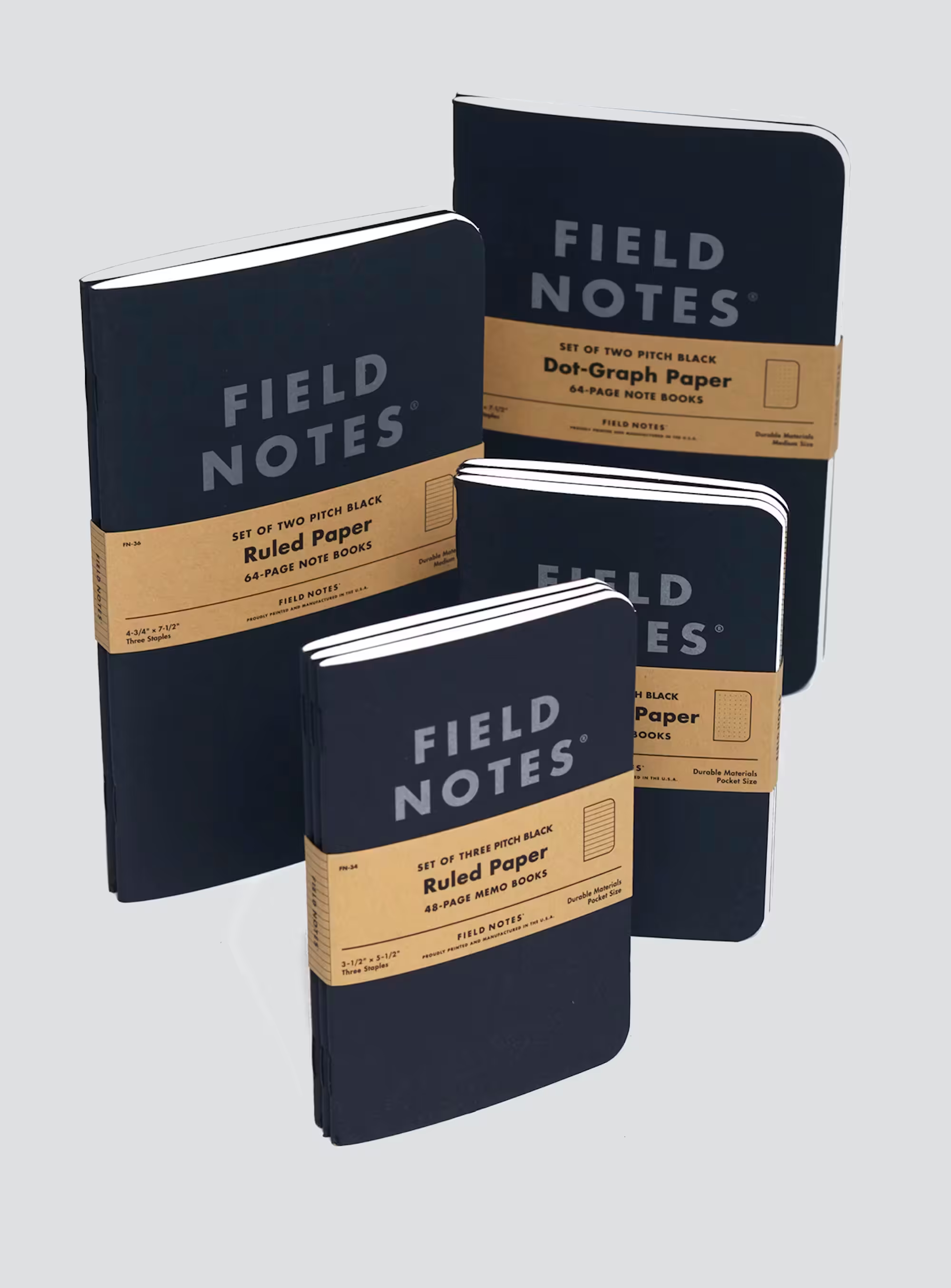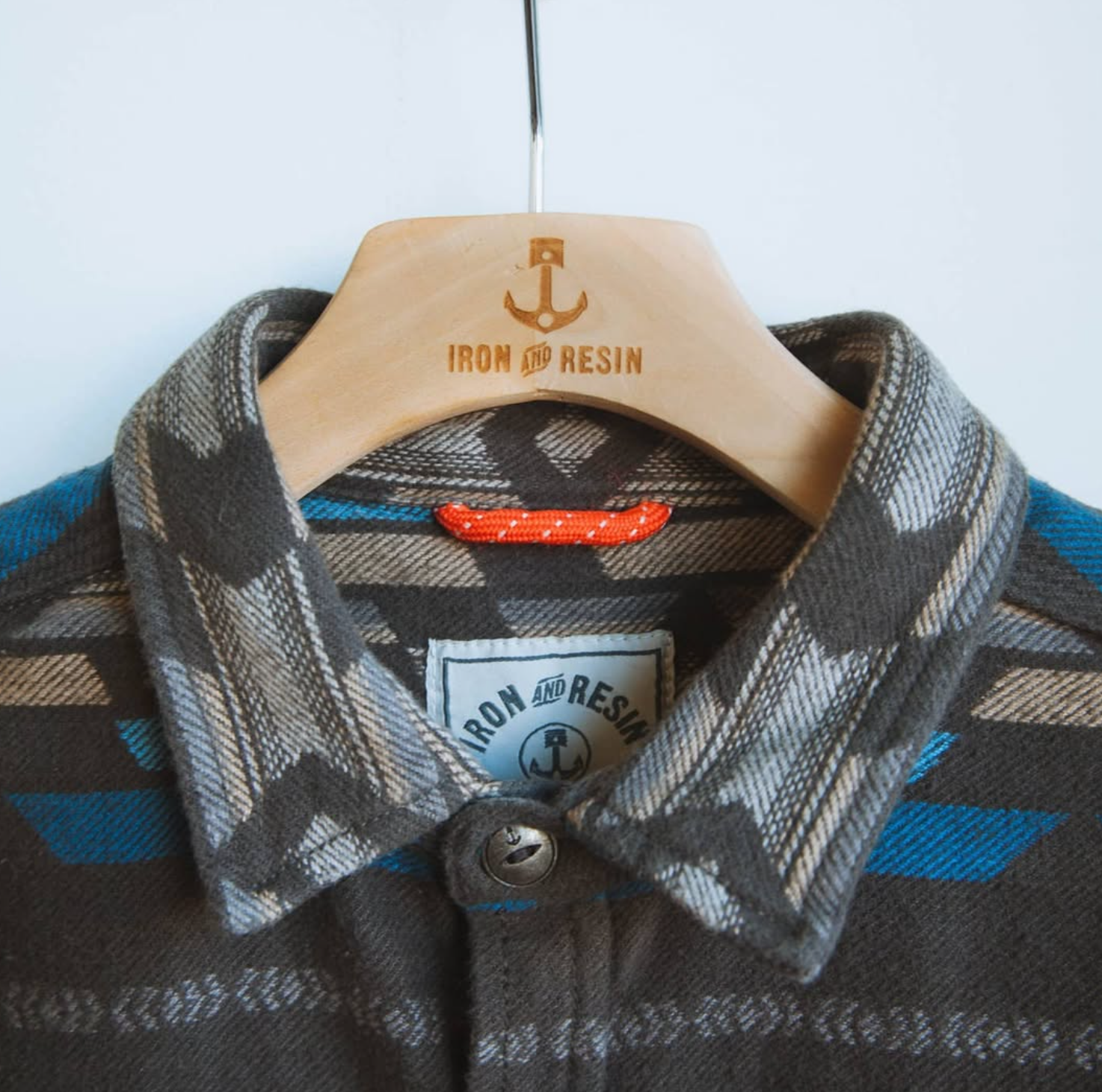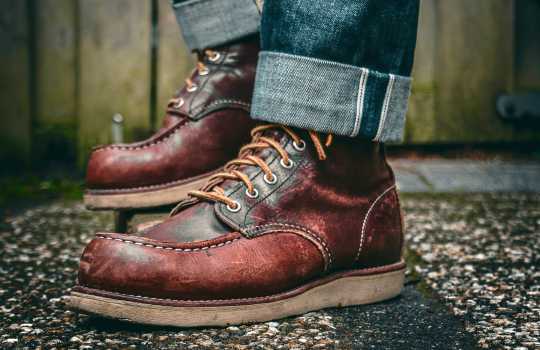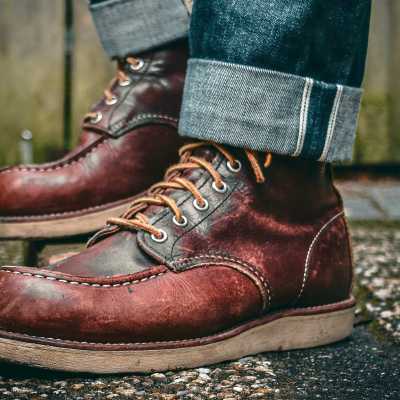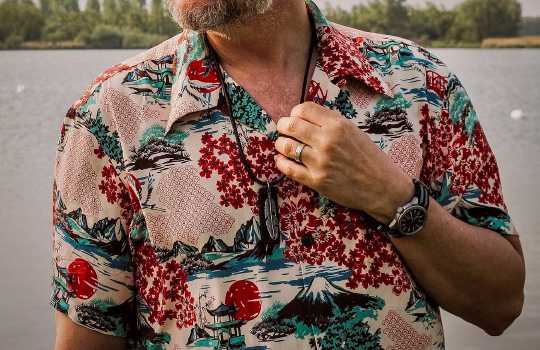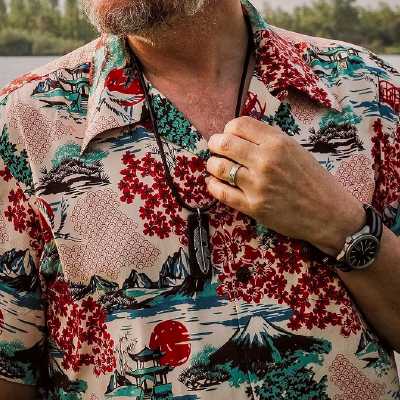You’ve clocked those perfectly rumpled flannels and selvedge jeans on your favourite Instagram accounts. Maybe you’ve caught yourself wondering if you could pull off leather boots that look like they’ve lived a life, even if you’ve never swung an axe. Good news: you absolutely can. Building a rugged wardrobe isn’t about LARPing as a lumberjack or cosplaying Clint Eastwood. It’s about curating gear that only gets better with time (and maybe a few well-earned scuffs).
From seasoned selvedge heads to fresh converts craving heritage style, this guide will steer you through the essentials, help you dodge rookie mistakes, and give you the confidence to look like you know what you’re doing—even if you’re just starting out.
What is Rugged Style? (Spoiler: It’s Not Just Plaid and Boots)
Rugged style is all about function, durability, and a certain “I could probably fix that” energy—even if you call a plumber for everything. Think heavy denim, sturdy boots, chore coats, tough fabrics, and details designed for a long haul, not a fleeting trend. It’s classic Americana with a shot of workwear utilitarianism, grounded in military heritage, western grit, vintage leisurewear, and rugged outerwear built to last.
Key attributes of rugged style:
- Tough materials (think selvedge denim, heavyweight flannel, full-grain leather)
- Classic silhouettes with a hint of nostalgia
- Details you notice after the 50th wear (triple-stitching, rivets, patina)
- Layering that makes sense, both visually and practically
- Versatility; ready for a spontaneous road trip, pint, or inconvenient weather
The Rugged Trinity: Your Essential Wardrobe Staples
For the must-own list, you don’t need a spreadsheet. You need three heavy-hitters: a hardy flannel shirt, real-deal selvedge jeans, and a pair of boots that nod “yep, ready for anything.”
1. The Flannel Shirt
Not all flannels are created equal. The Proper Cloth Japanese Red and Black Ombre Plaid Flannel, for example, isn’t just another check shirt to toss on a pile. This one’s crafted from heavyweight Japanese twill, brushed for softness but solid enough to shrug off a chilly morning or rough afternoon. Black snap buttons, and flap pockets for whatever ends up in your pockets. Throw it over a tee with worn-in jeans, channel “off duty ranch hand,” and thank us later.
Style tip:
Go for a fit that leaves room for a layer underneath. Whether it’s a classic Henley or a thermal, flannel reads best when it’s not vacuum-packed.
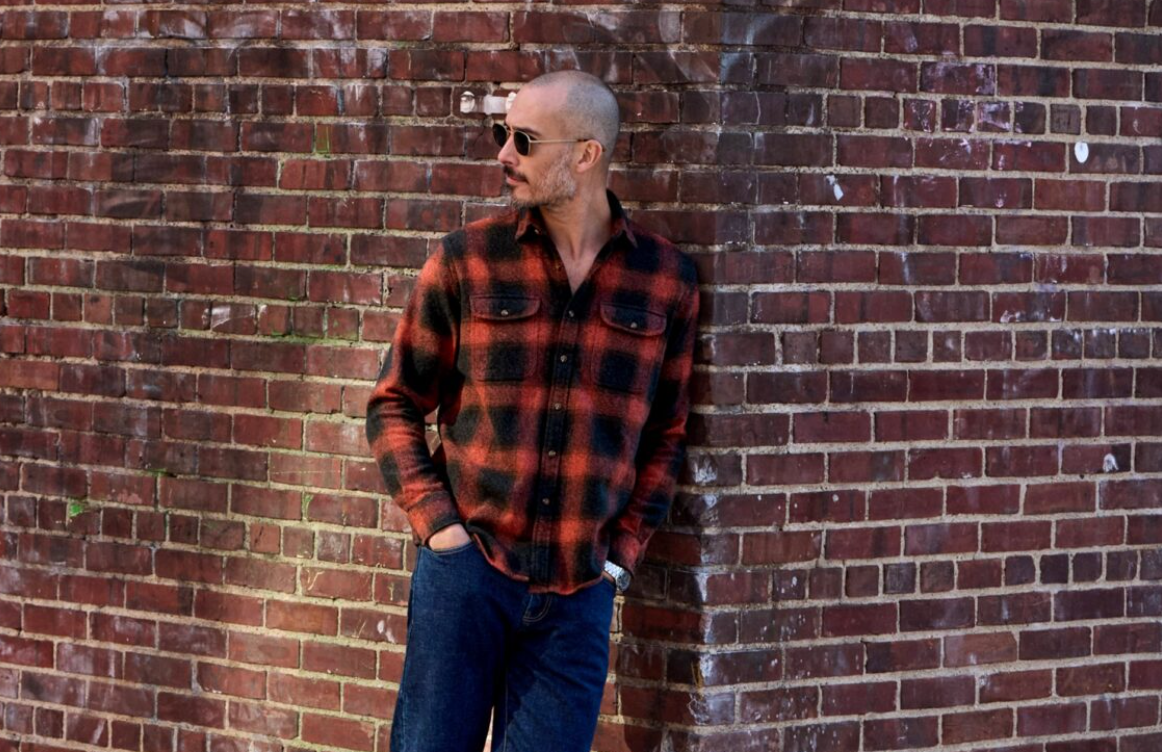
2. Selvedge Jeans
The heart of any rugged wardrobe. Benzak’s B-01, woven in Japan by Collect Mills and cut in Portugal, might be the benchmark. Raw (unwashed), sanforized for minimal shrinkage, these jeans balance a slim but wearable fit and the kind of construction (indigo-dyed stitching, copper rivets, curved waistband) that will be bragged about at dinner parties.
The beauty is in the wear. Deep indigo ages into electric blue, the “slubby” weave picking up character with every weekend hike or accidental bike chain snag. They’re less a garment, more a living thing.
Style tip:
Resist the urge to wash them immediately. The longer you wear them before the first wash, the better they’ll fade. Yes, that takes self-restraint. But “denimhead” street cred is at stake.
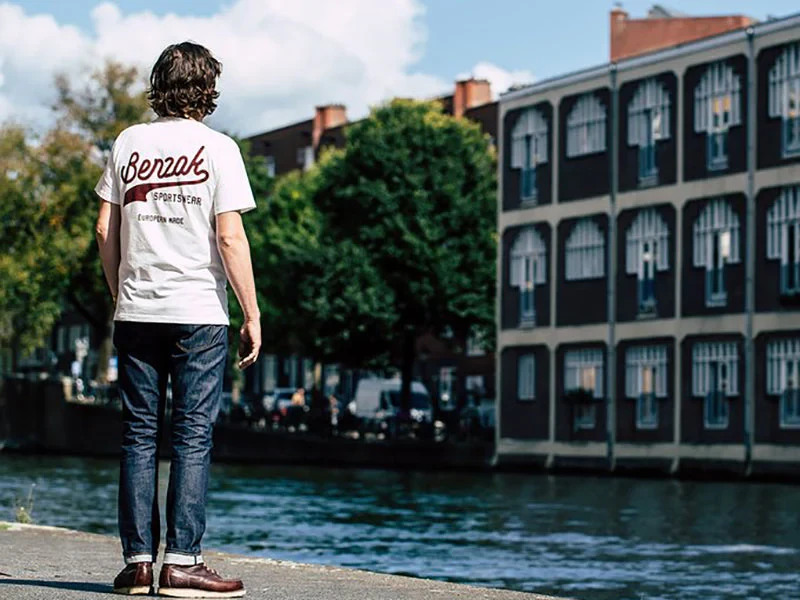
3. Leather Boots
Red Wing’s Classic Moc is as close as you get to a handshake in footwear. Handcrafted in the USA since the ’50s, built from full-grain Oro Legacy leather, Goodyear welted for recrafting, and capped off with that iconic “moc” toe. Initially designed for sportsmen and farmers, now favoured by pretty much everyone who values comfort and mileage. Break them in over a few weekends, keep them clean (ish) with a brush and some boot oil, and you’re golden.
Style tip:
Wear them with anything. Boots like these aren’t picky. Jeans? Obvious. Chinos? Still rugged. Yes, even with shorts if your local climate insists.
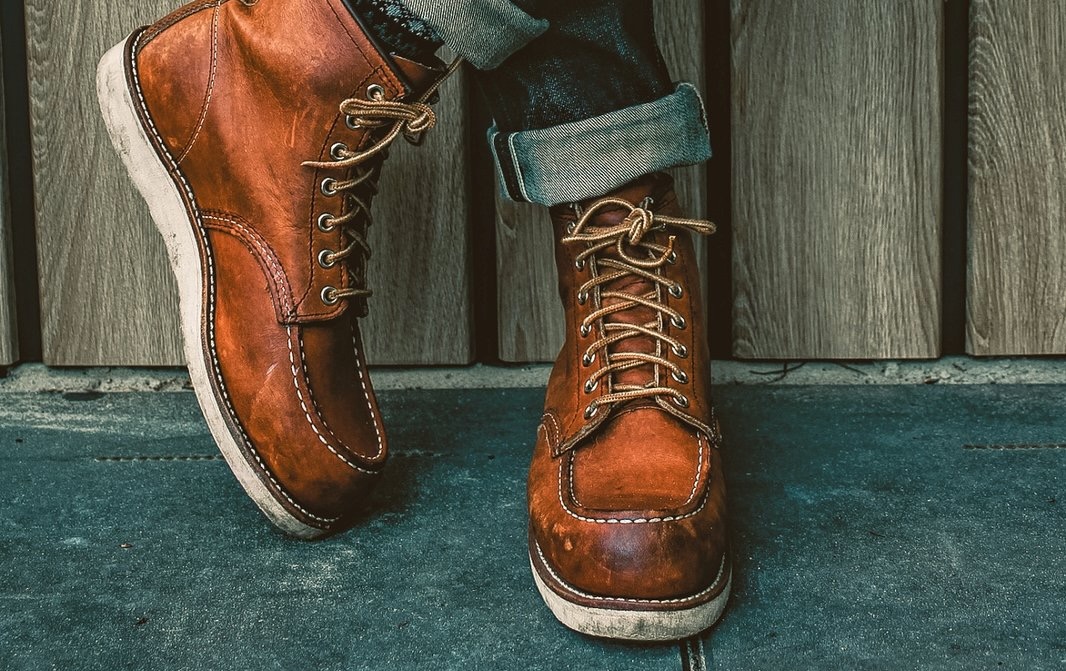
Building Your Rugged Wardrobe (Without Looking Like You’re Trying Too Hard)
Here’s where the fun starts. Rugged style isn’t about buying everything in one go. It’s about accumulating pieces that fit your life and feel uniquely yours. A few smart moves will keep you on the right track.
1. Start With the Basics
Lock in your core trio (the staples you now know). These aren’t “starter pieces”—they’re the bones. Each one looks great alone, even better together.
2. Think Durability Over Trend
Opt for heavyweight, well-constructed fabrics. Japanese denim, substantial flannel, and full-grain or oil-tanned leather tend to outlast the rest. If it feels solid and well-made in your hand, you’re on the right track.
3. Get Your Fit Right
A relaxed but tailored fit is the goal. Layering is crucial—but you don’t want to be mistaken for a shapeless stack of fabric. Leave enough room for a tee or a light sweater under a shirt, but don’t size up into the “whose jacket is that?” territory.
4. Master Layering (But Don’t Go Overboard)
Layering is an art, not a math problem. If you hit three layers and can’t spot your own shape or start sweating just thinking about it, peel a layer or two. A good rule from Denimhunters? Always keep it to two collars max, and remember that “hard over soft” (think raw denim jacket over brushed flannel, not the other way ‘round).
5. Colour Palette and Contrast
Keep it classic. A 70/30 split works beautifully (eg, navy and ecru, or olive and tan). Too many colours and contrast? You’ll look more clown than cowboy.
6. Make it Personal
Every scuff, crease, and custom patch tells a story. Don’t baby your boots. Don’t fear a busted seam or faded pocket. Fix it, patch it, and wear the patina with pride.
7. Accessorise Lightly
A heavy leather belt? Go for it. Maybe a wool cap or canvas tote. Accessories should support your look, not overwhelm it. If you’re getting more compliments on your necklace than your jacket, you’re probably overdoing it.
8. Mind the Context
No need to be the guy stubbornly wearing selvedge and boots to a beachside barbecue. Heritage pieces blend in best when you “read the room.” If in doubt, dress for utility, not uniform.
Your Rugged Starter Pack in Real Life
Want to see this in the wild?
Picture this for a relaxed city Saturday:
- Soft Japanese plaid flannel, open over a white tee
- Kojima selvedge denim, stacking naturally at the ankle
- Red Wing Classic Mocs, a year into their story, comfortably broken-in
- Subtle leather belt, a canvas daypack, and zero unnecessary accessories
Weather shifts? Add a waxed canvas field jacket or a simple wool cap. Heading out at night? Swap to a faded black tee or a chunky rollneck sweater. Rugged style doesn’t mind a little seasonality.
Final Word: Dress Rugged, Live Well
Your entry into rugged style isn’t about chasing a passing vibe. It’s about investing in hardwearing classics, building up confidence, and putting your own stories into your clothes.
The best rugged wardrobe is always a work in progress. Start small, invest in quality, wear your gear hard, and tweak your look until it feels like it’s really yours.
Start putting together your kit:
Go on, give your wardrobe the backbone it deserves.







